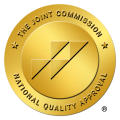Benefits of Telemedicine
for Addiction Treatment
What is Telemedicine?
Telemedicine is the practice of receiving one-on-one medical treatment via the internet. Telemedicine includes 24/7 monitoring, mental healthcare, and, in some cases, prescription medication. Another term for telemedicine is telehealth. The only real difference between telehealth and telemedicine is that telehealth is the more encompassing of the two.
Different parts/types of telemedicine
Telemedicine has 3 categories.- Video call – This includes Zoom, Skype, and other video chat methods. Video calls allow an onsite provider to rely on real-time data picked up through the call.
- Audio/video messages – Some doctors prefer to record videos or audio messages to send to a patient. Video/audio messages allow for direct contact with a doctor without time restraints.
- Remote monitoring – Remote monitoring is conducted via an app or device that tracks a patient’s vitals and mood. The medical provider receives real-time data. 1
History of telemedicine
The benefits of telemedicine trace back to the early 1900s. At the time, it was groundbreaking technology. Telemedicine was used via radio on battlefields, in small towns, and to pass urgent messages across the ocean. In the modern world, the internet plays a vital role in our day-to-day lives. As such, the benefits of telehealth are more widely known and practiced. 2
How a pandemic increases demand for telemedicine?
The benefits of telehealth during a pandemic are well documented. In March of 2020, shortly after the first Covid-19 quarantine, there was a 154% increase in telehealth visits. Almost 2.7 million patients were seen via telehealth during this time. Telehealth particularly aids patients with compromised immune systems and other vulnerabilities. Around 93% of telehealth patients seen during early pandemic were for non-Covid related rea-sons. Approximately 2.7 million people were treated virtually during the Covid-19 pandemic, which had rippling effects in containing the virus. 3Telemedicine and Addiction Treatment
How is it Done?
Telemedicine is typically conducted through a HIPAA-regulated app or device to ensure a patient’s privacy. The most common form is live video calls. However, other methods include motivational messages, reminders, chat groups, and mobile apps. Telemedicine can be for short or long-term medical care. Creating a long-term plan for combatting addiction is vital to recovery. Telehealth provides a safe and convenient space for addiction recovery.Is it Effective?
Not all telemedicine is equal. Telehealth is dependent on the complexity of the required treatment. For example, telephone calls are a less effective form of drug treatment than motivational messages. 4 The effectiveness is based on patient interest and usage. Video calls are the most effective method. Studies show that 50% of telemedicine patients stayed with their drug treatment after one year. In comparison, only 36% of in-person patients stayed with treatment during the same period. 5Benefits of Telemedicine for Addiction Treatment
The numerous benefits of telehealth for addiction treatment include:
- Convenience – It’s easier to make an appointment when it can be done from home.
- Wider Access – Through telemedicine, patients in rural towns or harsh environments can receive the treatment they need. Telemedicine also allows patients to converse with a wide range of specialists and better understand their options.
- Better Diagnosis – Accurate diagnosis occurs with a medical provider who has insight into the patient’s lifestyle. Telemedicine provides such an insight. Providers can see patients’ surroundings and better monitor diet and physical activity.
- Instant Care – Telemedicine gives a provider round-the-clock monitoring of a patient’s vitals and direct virtual access. It’s not feasible to speak with a provider 24/7. However, providers will be able to see up-to-date information and initiate direct contact in the event of an emergency. 6
Telemedicine and Mental Health Treatment
How is it done?
Benefits of telemedicine for addiction treatment
- Increased Access – Telemedicine offers patients a wide range of options for mental health treatment.
- Convenient Setting – Telemedicine offers one-on-one interactions. This is especially important for patients with anxiety issues.
- Professional Help – Telemedicine connects providers with the patients that need them. 7
Will Increases in Telemedicine Remain High After the Covid-19 Pandemic?
Consumer demand
The pandemic caused a severe uptick in telemedicine appointments. However, this increase shows no signs of slowing down, and it is unlikely to change after the pandemic. The convenience of telemedicine produces higher retention rates among patients. Plus, the pandemic has raised telemedicine awareness among the population. These factors suggest that telemedicine will quickly become the norm for non-emergency treatment and healthcare. 8
Provider demand
There’s little to no downside to telemedicine for medical providers. Hospitals use fewer resources when attending to virtual patients while being able to interact with more patients. Telemedicine also limits the spread of dis-ease. Telemedicine is cheaper as it lowers the costs of running a facility and reduces the potential for injury. Many providers have increased the number of services they provide via telemedicine. As medical monitoring systems advance, so will the use of telemedicine.
How Does Telemedicine Improve Treatment at Your Rehab Facility?
Telemedicine providers can interact with far more patients than the traditional provider. Patients receive a deep-er quality of care customized to their specific needs. Telemedicine also fosters a safe environment. Patients who are anti-social, injury-prone, and Immuno-compromised can receive treatment in the safety of their own homes. This also means that medical staff suffers from fewer injuries.
However, the increase in patients means processing more medical billing. There are specific telemedicine CPT codes to learn before that can occur.
Why outsourcing telemedicine improves profits for rehabs
Outsourcing is cheaper than in-house labor. Providers save money on the actual billing of telemedicine CPT codes and facility upkeep. Providers who outsource telehealth CPT codes and other billing can conserve more resources, use less electricity, and maintain a calmer working environment.
Outsourcing telemedicine means the onsite medical providers have more space and time to treat patients and catch up on paperwork. Fostering a deeper connection between medical provider and patient betters the chance of a successful recovery.
Outsourcing medical billing also makes it easier to stay in compliance with HIPAA and other medical boards. The medical biller that will review your accounts is professionally trained and has invaluable experience. This lowers the chance that an onsite hospital staff member becomes too overwhelmed with billing responsibilities.
Telemedicine is an effective tool for addiction and mental health treatment. Although the world is slowly re-turning to normalcy after the Covid-19 pandemic, telemedicine and its benefits are here to stay. 9
Resources
https://www.ncbi.nlm.nih.gov/pmc/articles/PMC5866865/
https://www.ncbi.nlm.nih.gov/books/NBK207141/
https://www.cdc.gov/mmwr/volumes/69/wr/mm6943a3.htm
https://digitalcommons.du.edu/cgi/viewcontent.cgi?article=1000&context=counselingpsychology_faculty
https://www.hopkinsmedicine.org/health/treatment-tests-and-therapies/benefits-of-telemedicine
https://telehealth.hhs.gov/patients/finding-telehealth-options/
https://www.cdc.gov/coronavirus/2019-ncov/hcp/telehealth.html




